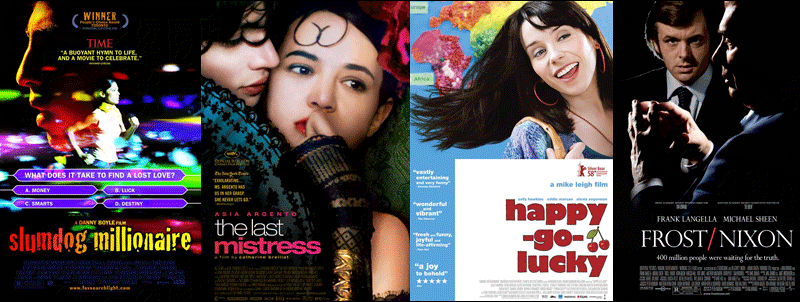“Chéri”-Based on the novel by Collette, and with a screenplay by Christopher Hampton (“Atonement’), “Chéri,” is the story of courtesans during the turn-of-the-century Belle Epoque in Paris who became quite wealthy and formed their own little social circle. Michelle Pfeiffer, looking lovely at age 51, is the aging Lea de Lonval, a successful and somewhat retired courtesan who falls for Chéri (Rupert Friend), the son of one of her colleagues. Chéri, whose mother, Madame Peloux (Kathy Bates), is overbearing and opinionated, is taken with the elder Lea and falls into a six-year relationship with her. While Peloux initially tolerates the relationship between the young Chéri and the much older Lea, she ultimately dreams of grandchildren and forces her son into a loveless marriage with Edmee (Felicity Jones), the daughter of another of their clan. Lea, although outwardly calm, realizes that she greatly misses her young lover. Although the film is watchable, and Michelle Pfeiffer, not one of Hollywood’s greatest actresses, does a fairly decent job, it suffers from some stilted acting and miscasting. “Chéri” is a French story that needed French actors and language. Listening to the stars in period costume speaking “American” or “British” is disconcerting. It’s a shame that director Stephen Frears (“The Queen”) loaded it with Americans Michelle Pfeiffer and Kathy Bates and Brits Rupert Friend and Felicity Jones, with nary a French word or accent to be heard. B (10/30/09) “Every Little Step”-I saw “A Chorus Line” twice in the late 1970s, once in London and once in Washington, DC. It was a delight for those of us who love Broadway musicals because it gave behind-the-scenes insight into the psyches of the talented people who rarely, if ever, star but are always in the background. This is a subject of particular fascination to someone like me who wonders about just who the people on stage really are. “Every Little Step” is a simple documentary about the behind-the-scenes casting of the recent behind-the-scenes musical revival itself. With archival footage of the late Michael Bennett, the creator of “A Chorus Line,” and interviews with composer Marvin Hamlisch and original star Donna McKechnie, we are introduced to the pain, effort, and joy that went into the casting of a recent Broadway revival of “A Chorus Line,” with the production crew led by Bob Avian, Michael Bennett’s original co-creator, and Baayork Lee, who originated the role of Connie. “Every Little Step” is enlightening, if not a little repetitive and seemed to overemphasize the female tryouts, giving short shrift to those contending for the male roles. At the end there is joy among the successful, although a look at the Internet Broadway database shows that some of the winners were only in the show for a few months. The revival ran for a little less than two years. B- (10/27/09) | |




